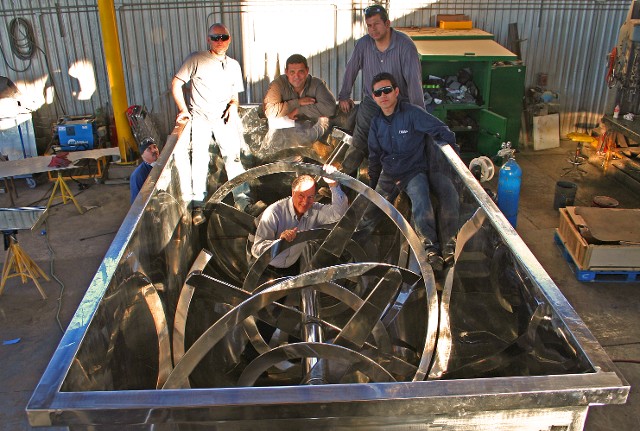If you’re in the food processing industry, you know how important it is to have reliable dry or powdered products. Whether you’re making spices, instant recipes, drink mixes, nutraceuticals, or cosmetics, you need to be able to mix dry ingredients with ease.
One way to do this is with a ribbon blender. However, selecting a model that is right for your application is essential.
Versatility
One of the most significant advantages of using ribbon blenders for food processing is their versatility. They can handle various materials, including dry ingredients for baking mixes, powdered drink mixes, nutraceuticals, and cosmetics.
These blenders are also great for pharma applications, where they mix dry solids and powders to produce tablet formulations, capsules, and other life-saving drugs.
They can also make several other products, such as fertilizers and ceramics. They’re an essential piece of equipment for many industries, allowing manufacturers to create various products without a sweat.
When deciding which ribbon blender suits your needs, you need to consider the bulk density of your material and how much time you need to mix it. Other factors include your choice of agitator, seals, packing, and discharge valves.
Safety
Whether you manufacture infant formula, cake mixes, spice blends, instant salad dressings, or gelatin, ribbon blenders can save you valuable time and money. The U-shaped trough within the machine contains precisely pitched inner and outer ribbons that tumble and carry material in a well-balanced axial and radial flow pattern.
The gentle mixing of ribbon blenders helps eliminate dead zones in the machine where materials may accumulate or stagnate. This ensures smooth and uniform processing of dry ingredients – no matter the product or its density or composition.
Efficiency
Using ribbon blenders for food processing is one of the most efficient and cost-effective ways to produce a consistent blend. This is because ribbon blenders are designed to mix powders based on particle size, shape, and density.
Choosing a suitable agitator for your ingredients is essential when using this blending equipment. The agitator size depends on the volume of materials that need to be mixed and the speed required for blending them.
Choose an appropriately sized ribbon blender to protect your agitator from damage and ensure you get the best mix. The batch volume should not exceed the agitator’s swept volume (the area occupied by the agitator).
Savings
Ribbon blenders are popular for blending powders, liquids, and pastes—their unique design results in thorough mixing without over-processing or damaging fragile ingredients.
Often used in the food industry, these sanitary mixers can save manufacturers significant money on maintenance costs and water use. They are also simple to clean and are less energy intensive than other mixers.
Ribbon blenders consist of a U-shaped horizontal trough with an agitator that rotates and generates a peripheral speed of up to 300 FPM. The agitator uses spokes that support outer and inner helical blades called ribbons.
Durability
Blending is an essential element of food processing and manufacturing. In particular, blending powders and granules is an integral part of the food extrusion process.
Ribbon blenders are the perfect solution for food processing because they have exceptional mixing capabilities. They can easily mix powders and granules into a smooth, uniform product.
They also have a robust design that makes them suitable for industrial applications. They are built with stainless steel, making them easy to clean and disinfect.
They can mix various products, including dry ingredients like flour, cereals, snack bars, and spices. They can also add liquid ingredients such as oil, flavorings, or colorants.

